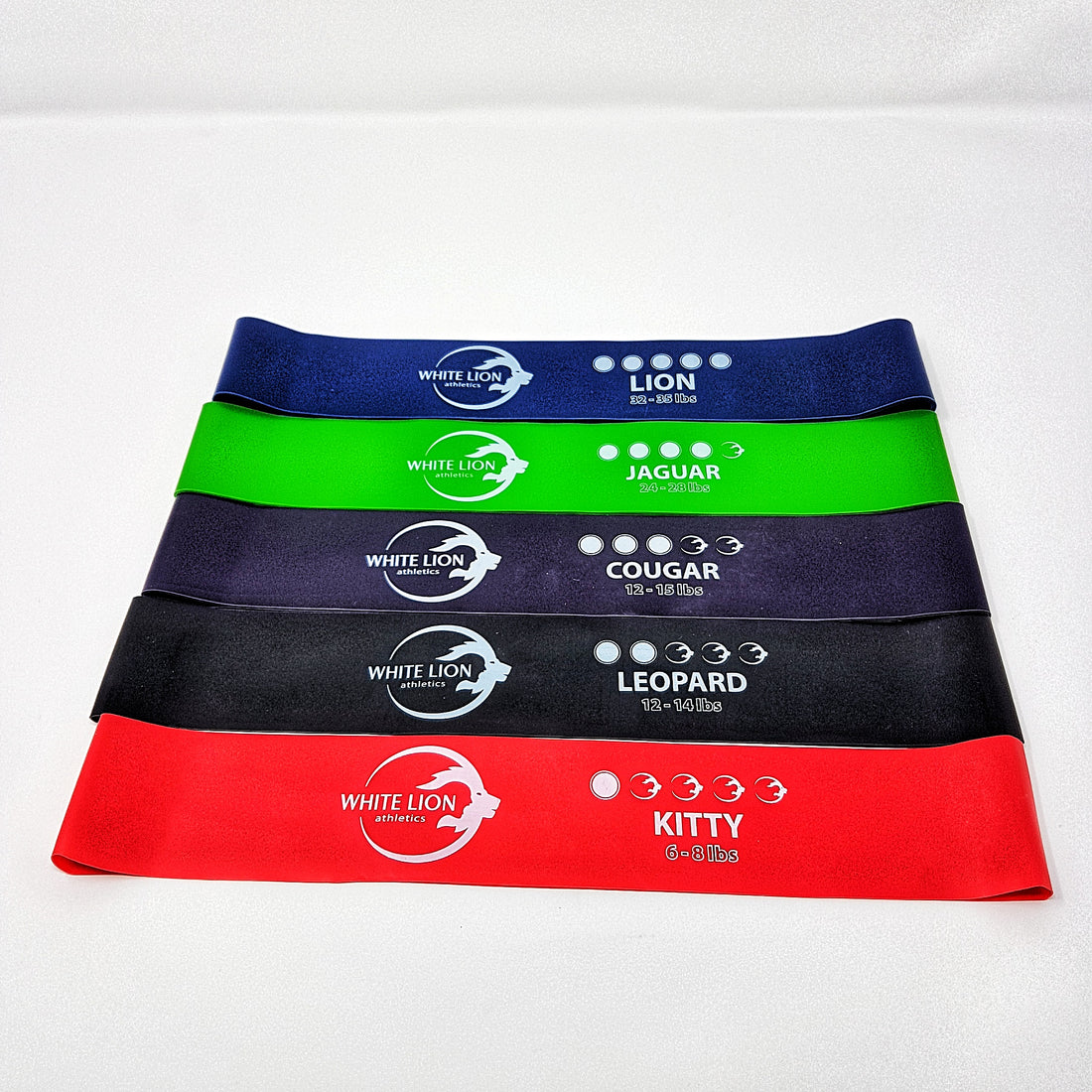
10" Mini Bands vs 12" Mini Bands: which is better?!
DJ GuzdaShare
One of the most common questions that we receive is:
What size Mini Band is Best?
This is very important question because choosing the right Mini Band is going to make your exercise more (or less) effective or less effective and will affect the operating costs of your training program (or overhead in your fitness facility) because bands that are over stretched will snap; or, they will not be used because they are too big.
So, the question is: what size band do I choose? 9”, 10” or 12”?
An important thing to keep in mind, when we talk about any sort of rubber resistance Mini Band, is how much this band will be stretched during the exercise.
Stretching the band happens for a few reasons: (1) exercise choice and its range of motion; (2) the size of the area where the band is going around {body type of user and band placement (around the ankles, above your knees or around tibial tuberosities)}; and, (3) putting it on and taking it off.
Let’s take the Side Laying Hip Abduction exercise with band placement around the ankles. If we are using a 12” Mini Band around our ankles, we will be moving through roughly 5%+/- of the range of motion without added resistance from the mini band.
Solution: move the band high upper your legs.
Problem: The higher you move the band, the easier it gets to perform the exercise (relative to the ankle placement position).
Another important (and often overlooked consideration) is taking the band on and off.
If we were wearing socks, or we have bare feet, there is less friction putting the band on and taking it off, as the bands will not be catching on your shoes.
If you're in a setting (such as a high volume clinic or training facility) where you're clients are: wearing shoes; the bands are coming off and on a lot; and there are a limited number of bands: the amount of times that band is going to catch on shoe rubber is going to decrease the life of that band. It will not matter which brand of band you have because all rubber will break down in the presence of increased friction.
So we're going to go back to the question again. So which one do I pick for sidelining hip abduction? Consider all of the points about to answer the question.
Consideration #1: Exercise Selection & Range of Motion
The 12" band won’t provide resistance until you move a little further into the range of motion, but it's going to be easy to take on and off. However, the initial starting point in a particular exercise maybe better suited for bodyweight only as the user may not have sufficient strength and stability to begin the exercise with the load provided by the mini band.
I do understand that I am only using 1 exercise as an example; however, these considerations can be made for all lower body exercises that use Mini Bands.
Consideration #2: Friction
What's going to be better for my setting? Are all my clients, patients or athletes wearing shoes? If they are, consider this as well: are they rushing between exercises or are they rushing between sets where the band may not be removed carefully and maybe prone to snagging on their shoes when the band is removed?
All these circumstance will affect the life that band and it is important to keep this in mind because if your training tools are constantly breaking you need to understand the reasons and the ways to prevent this from happening. If you don’t do this, the first thing that you're going to think about is that these tools are junk: I need new bands. Well, you might need new bands, but you also might need a new way to use the bands and understanding these factors might make a little bit easier.
Consideration #3: Anthropometrics & Band Placement
Now, what if we're doing Monster Walks or Sumo Walks? The choice for any walking exercises is normally a 9” or 10” Mini Band because “they are harder” or “they have more resistance”.
An important consideration to keep in mind when performing lower body exercises with Mini Bands is: always keep tension on the band. This means, do not bring your legs so close together that the band becomes slack and you lose all the tension on it. With this in mind, a 9” or 10” Mini Band is often selected because these bands starting adding resistance at the early stages of the movement.
Some things to consider with 9” and 10” Mini Bands:
-
Do I have clients with a variety of body types (do the majority have small legs, big legs or is there a variety)?
-
Where will the bands be placed most often (ankles, tibial tuberosities or above the knee); or, will the placement vary because of the demographics of your training population?
It is important to consider these issues because band placement will determine how much of the Mini Band’s working range will be taken up by simply fitting over that area of the body.
If we are using a 9” or 10” band and we're doing Monster Walks or Sumo Walks (and band placement is prescribed or suggested to be below the knee or above the knee) you're going to take up a lot of the band’s working range just simply fitting over the musculature of that patient or client.
Although a 9” or 10" band will seem to be offering a more effective training session because it is harder to stretch, the lifespan of that band will actually be reduced because it will be stretching more than twice as normal resting length on a regular basis. So what you might want to consider doing is going for a 12” band.
Which Size Band is Better?
What is the definition of better in your training context? Does better mean:
-
Lasting longer?
-
Providing resistance at the beginning of the Rang of Motion?
-
Being able to accommodate many different band placement positions?
-
Best suited for placement around the ankles?
